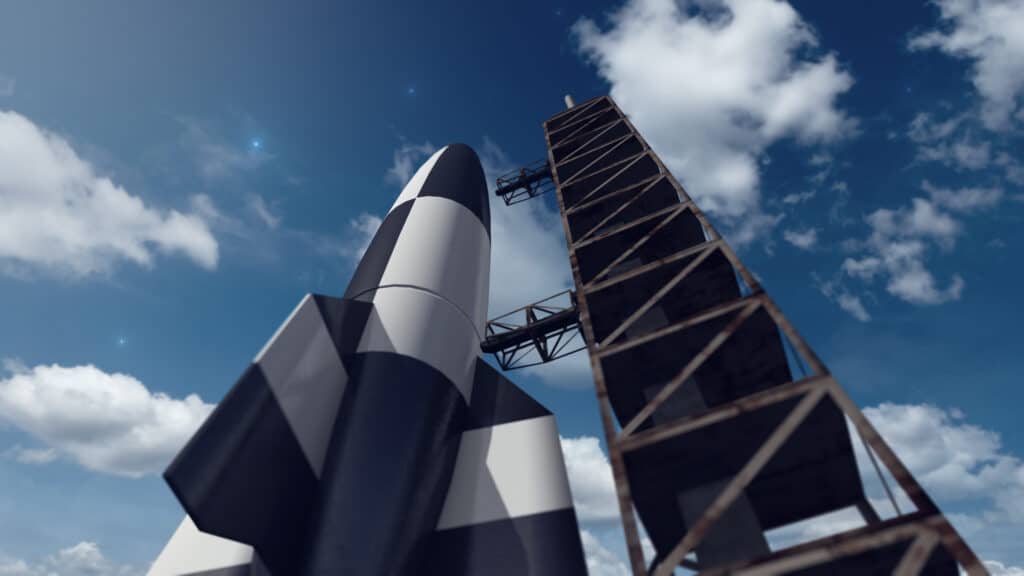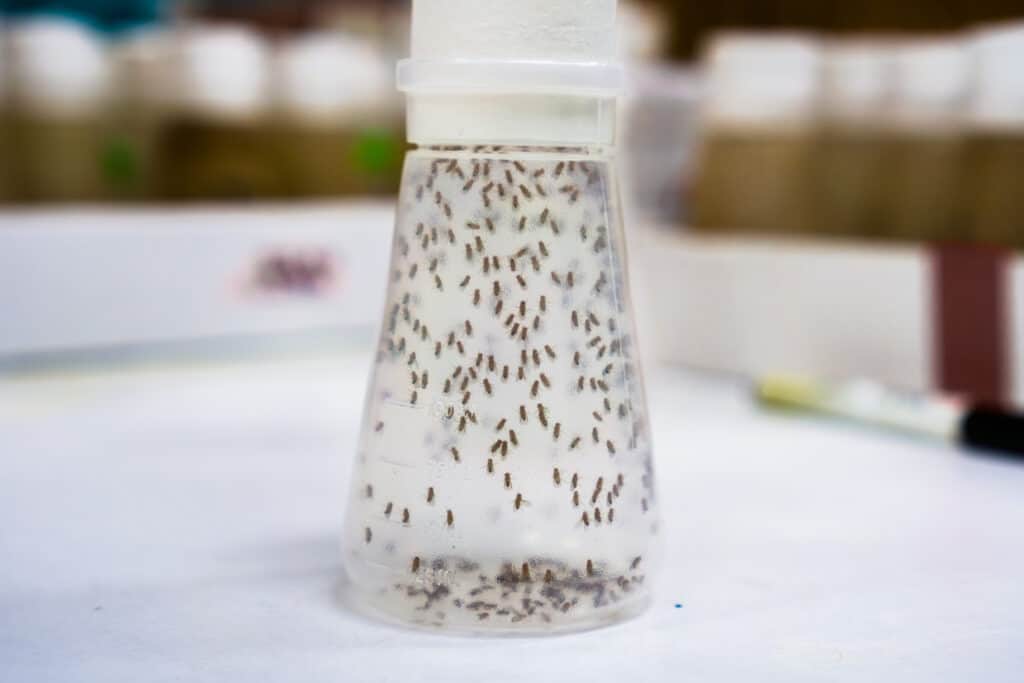Since 1961 when Russian cosmonaut Yuri Gagarin and American astronaut Alan Shepard became the first humans to leave the Earth’s atmosphere, over 600 people have followed. Yet, space agencies didn’t just strap people to rockets and blast them off into space before knowing that our bodies could handle the stress of launch, recovery, and extended weightless periods.
Harsh as it is, the earliest space pioneers weren’t volunteers. The Soviets sent Laika, the dog that likely only survived a few hours in space; the United States sent Albert I, a monkey whose rocket failed. However, Laika and Albert I weren’t the first or the last animals in space.
The space race between the Soviet Union and the United States continued for decades. Each side kept a close eye on what the other was doing and that competition pushed them to go farther, faster. While the competition may have been driven by politically motivated propaganda, the resulting breakthroughs helped everyone (Velcro and micro-processors, anyone?).

The V-2 rocket was the world’s first large-scale liquid-propellant rocket.
©iStock.com/:fredmantel
Why Did Animals Go First?
At the time, scientists debated whether the human body could withstand the pressures of space – both physical and mental. The G-forces from a launch were challenging enough; then, they had to find a way to bring the astronauts home alive.
They decided that using animals, beginning with fruit flies on the American side, was their next best option. The animals could be monitored using electronic sensors, then retrieved when the capsule returned to Earth.
Fruit Flies in Space
On February 20, 1947, the United States loaded a bunch of fruit flies onto the V-2 rocket launched from the White Sands missile range in New Mexico. Their goal was to study the effects of radiation exposure on fruit flies at high altitudes.
In less than four minutes, the rocket reached 68 miles in altitude. Once it reached altitude, it ejected the blossom capsule, which successfully parachuted to the ground.
The fruit flies survived the experience, and scientists determined that the trip hadn’t changed their DNA.

In 1947, the United States launched the V-2 rocket carrying fruit flies used to study the effects of radiation exposure at high altitudes.
©iStock.com/Sundry Photography
The United States Sent Monkeys and Chimpanzees
The United States sent several monkeys into space during the 1950s and 1960s. The monkeys were sedated before launch and implanted with sensors; most survived their trips to space, but the landing killed some of them before scientists figured out how to splash down in the ocean safely.
June 14, 1949 – Albert II (Rhesus Monkey)
Albert II was the first monkey to get to space. His V-2 Blossom rocket launched from White Sands, New Mexico, soared to 83 miles in altitude before the capsule’s parachute failed and the monkey died on impact. His predecessor, Albert I, died when his rocket failed on the way up.
September 20, 1951 – Yorick and 11 Mice
Hamlet may have known Yorick, but this monkey survived his trip to space – and the return flight.
Yorick’s flight left from Holloman Air Force Base in New Mexico. NASA recovered him and his rodent buddies after a 236,000-foot Aerobee missile flight. Yorick’s successful flight garnered media attention because he was the first monkey to survive a space flight and the later landing.
December 13, 1958 – Gordo (Squirrel Monkey)
Gordo was a squirrel monkey that road a Jupiter rocket 600 miles high. Unfortunately, the monkey died on splashdown because a flotation mechanism failed, but his flight proved that humans could survive a similar trip.
January 31, 1961 – Ham (Chimpanzee)
Ham, perhaps one of the most famous primates in space, paved the way for Alan Shepard’s first space flight on May 5, 1961.
The chimpanzee launched in the Mercury Redstone rocket, which took him on a similar path as Shepard would later take. However, Ham’s original flight plan was less intense than the one he finally took.
It called for a 115-mile altitude and speeds of up to 4,400 mph, landing at about 290 miles downrange. However, thanks to a technical glitch, the craft carrying him reached a speed of 5,987 mph, 157 miles in altitude, and landed 422 miles downrange.
During the flight, Ham was weightless for 6.6 minutes during the 16.5-minute flight. After the flight, his medical exam showed that he was a little dehydrated and tired but otherwise healthy.
Ham lived alone on display at the Washington Zoo from 1963 to 1980, when he was moved to the North Carolina Zoological Park in Asheboro. When he died on January 17, 1983, scientists retained his skeleton for research. They laid the rest of his remains to rest in front of the International Space Hall of Fame in Alamogordo, New Mexico.

Ham, perhaps one of the most famous primates in space, paved the way for Alan Shepard’s first space flight on May 5, 1961.
©NASA, Public domain, via Wikimedia Commons – License
November 29, 1961 (Chimpanzee)
The chimp Enos took an orbital flight which was the last test for human flight before John Glenn orbited the Earth on February 20, 1962. The flight plan originally called for three trips around the Earth, but a malfunctioning thruster and a few other technical glitches led flight controllers to terminate the flight after only two orbits. Eleven months after the flight, Enos died of dysentery at Holloman Air Force Base.
The Soviet Union Sent Dogs
Before the Soviets chose dogs for launch, several small, ”one-way” lab animals went up – mice, rats, rabbits, etc. Their goal was collecting enough information to put a human into space safely.
It may seem that dogs were a ”lesser” choice than monkeys. After all, the monkeys can be trained to perform moderately complex tasks and have hands with which to complete them. However, the Soviets chose dogs over primates because they believed they wouldn’t be quite as fidgety. In addition, there were always two dogs to ensure more accurate test results; finally, they chose females because it was easier to control their waste.
While the Americans deliberately chose monkeys for particular behaviors and temperament, the Soviet dogs were chosen precisely because of what they didn’t have: homes. That’s right; the Soviet dogs were all strays. However, this isn’t quite as cruel as it sounds. They did so because their scientists believed that a homeless dog would be tougher than one raised in a home – better able to withstand the cold and stress of space flight. They knew the risks were high and wanted them to survive if possible.
August 15, 1951 – Tsygan & Dezik
These were the first suborbital astronauts. They survived this flight without any ill effects. Then, a few short weeks later, Dezik launched with Lisa, but both dogs died. A data recorder survived, however, and gave the Russian scientist Korolev valuable information on the flight.
September 15, 1951 – ZIB
ZIB and another Russian dog launched and successfully returned to Earth. It was supposed to be Bobik, but Bobik escaped. They found a replacement stray dog at a nearby bar and named her ZIB – the Russian acronym for ”Substitute for Missing Dog Bobik.” The dogs reached about 62 miles in altitude and returned successfully.
November 3, 1957 – Laika
Laika was a stray mutt that the Russians had picked off the street. They quickly trained her, and she went up into the second Sputnik sphere inside a metal crate. Unfortunately, the rushed circumstances of this flight meant they didn’t have time to develop a recovery plan (or any survival plan), and she died a few hours into the flight.

Laika, the space dog’s original space suit, now displayed at the Moscow Space Museum.
©James Duncan, CC BY-SA 2.0 <https://creativecommons.org/licenses/by-sa/2.0>, via Wikimedia Commons – License
The French Sent a Cat on October 18, 1963
Now there’s something most people don’t know. Of the thousands of animals launched into space, cats aren’t the most well-known. That’s because, to date, only one cat has ever made it to space.
Félicette was one of 14 stray cats that the Centre d’Enseignement et de Recherches de Médecine Aéronautique (CERMA) chose for training. The cats’ training involved spending time in restraining suits and centrifuges. They also placed implants and permanent electrodes on them.
Finally, they narrowed it down to six cats based on behavior and temperament. Félicette made history launched into space atop a Véronique AG1 rocket from the Sahara Desert in Algeria. Her journey reached an altitude of almost 100 miles and lasted less than 15 minutes. She was briefly weightless and survived the trip without harm.
Unfortunately for Félicette, French scientists euthanized her two months after her fantastic adventure to study her brain.
Tortoises in Space – September 14, 1968
The space race was a crazy time for the animals of planet Earth. Even a few turtles managed to ride on a Soviet rocket that made them the first animal to orbit the moon.
A couple of Russian Steppe tortoises rode on Zond 5, accompanied by insects, mealworms, seeds, plants, and a few types of bacteria. After a successful orbit around the moon, the spacecraft returned to Earth, splashing down in the Indian Ocean. The turtles survived the landing and returned to Moscow. Like some other animals, these were dissected for comparison with tortoises that hadn’t been in space.
Other Space-Traveling Organisms
Reptiles, fruit flies, and mammals weren’t the only animals to join the space race. Here’s a list of other living creatures that have been to space.
The early animal astronauts were an effort to understand the effects of microgravity on living organisms. As a result, they have contributed to knowledge about behavioral performance, cardiovascular status, fluid and electrolyte balance, tissue development, and mating in zero gravity.
These experiments continue as scientists seek to understand the long-term effects of microgravity in preparation for longer journeys – maybe to Mars or beyond.
Up Next
- How Far Away From The Sun, and Other Planets, is Earth?
- 10 Animals That Have Been to Space
- NASA Has ‘Heard’ Space, and Frankly, It’s Terrifying
The photo featured at the top of this post is © Nadiia_Semyroz/Shutterstock.com
Sources
- The Sydney Morning Herald, Available here: https://news.google.com/newspapers?nid=1301&dat=19631020&id=yYNWAAAAIBAJ&sjid=wuUDAAAAIBAJ&pg=3200,5973576
- Nasa, Available here: https://history.nasa.gov/animals.html
- Vintage News, Available here: https://www.thevintagenews.com/2018/08/29/tortoise-in-space/?safari=1
- Wikipedia, Available here: https://en.wikipedia.org/wiki/List_of_space_travellers_by_first_flight#Table
- Nasa, Available here: https://www.nasa.gov/feature/60-years-ago-soviets-select-their-first-cosmonauts
Thank you for reading! Have some feedback for us? Contact the AZ Animals editorial team.







